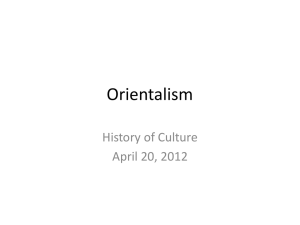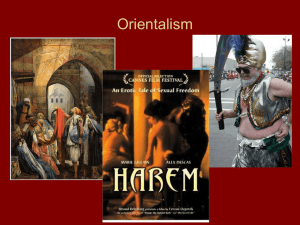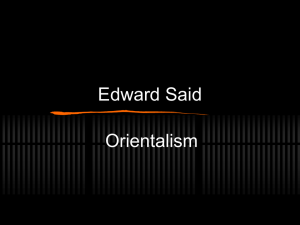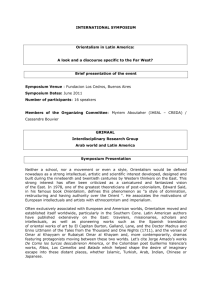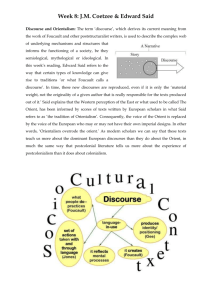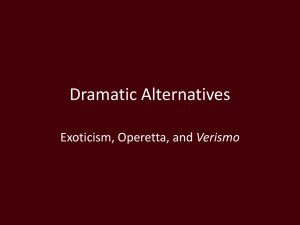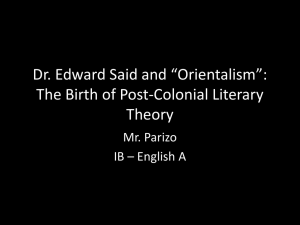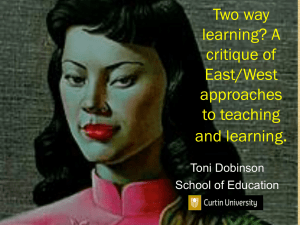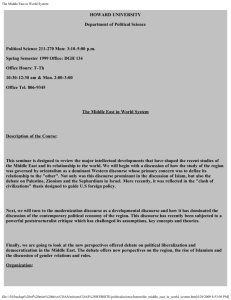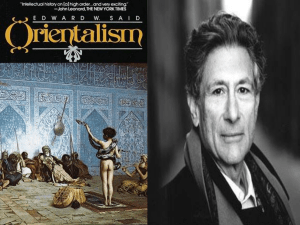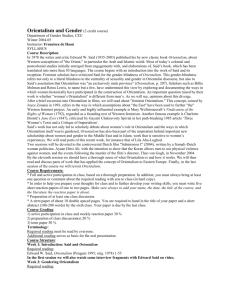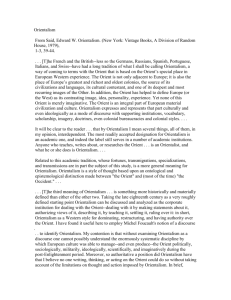365 Ways of Doing and Undoing Orientalism
advertisement
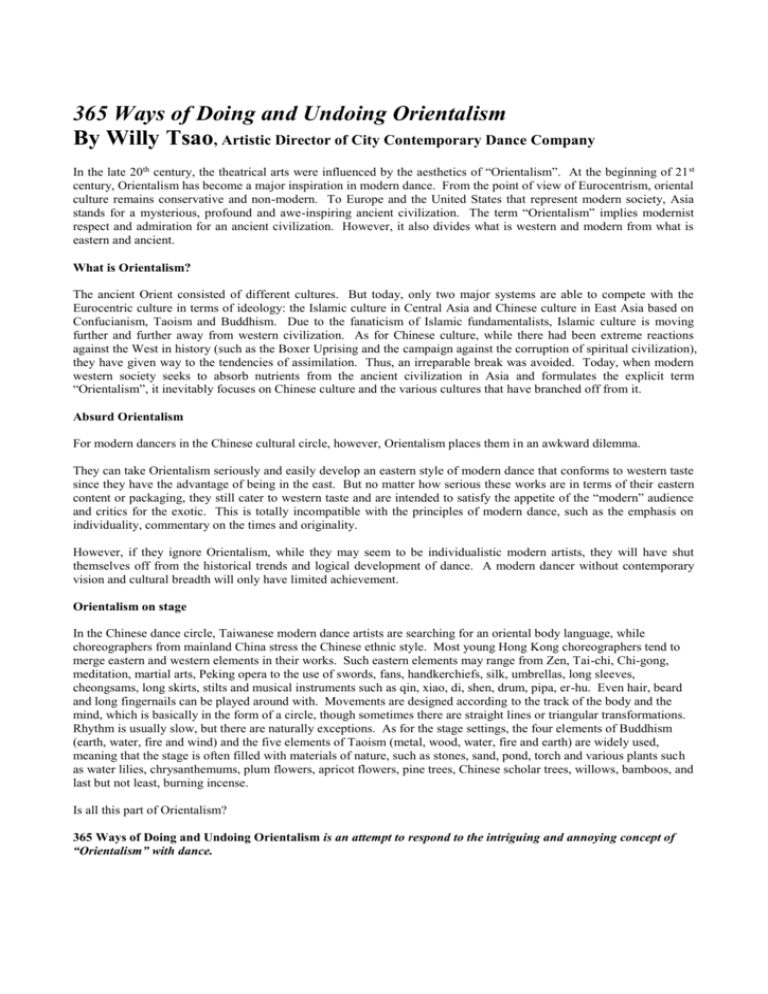
365 Ways of Doing and Undoing Orientalism By Willy Tsao, Artistic Director of City Contemporary Dance Company In the late 20th century, the theatrical arts were influenced by the aesthetics of “Orientalism”. At the beginning of 21 st century, Orientalism has become a major inspiration in modern dance. From the point of view of Eurocentrism, oriental culture remains conservative and non-modern. To Europe and the United States that represent modern society, Asia stands for a mysterious, profound and awe-inspiring ancient civilization. The term “Orientalism” implies modernist respect and admiration for an ancient civilization. However, it also divides what is western and modern from what is eastern and ancient. What is Orientalism? The ancient Orient consisted of different cultures. But today, only two major systems are able to compete with the Eurocentric culture in terms of ideology: the Islamic culture in Central Asia and Chinese culture in East Asia based on Confucianism, Taoism and Buddhism. Due to the fanaticism of Islamic fundamentalists, Islamic culture is moving further and further away from western civilization. As for Chinese culture, while there had been extreme reactions against the West in history (such as the Boxer Uprising and the campaign against the corruption of spiritual civilization), they have given way to the tendencies of assimilation. Thus, an irreparable break was avoided. Today, when modern western society seeks to absorb nutrients from the ancient civilization in Asia and formulates the explicit term “Orientalism”, it inevitably focuses on Chinese culture and the various cultures that have branched off from it. Absurd Orientalism For modern dancers in the Chinese cultural circle, however, Orientalism places them in an awkward dilemma. They can take Orientalism seriously and easily develop an eastern style of modern dance that conforms to western taste since they have the advantage of being in the east. But no matter how serious these works are in terms of their eastern content or packaging, they still cater to western taste and are intended to satisfy the appetite of the “modern” audience and critics for the exotic. This is totally incompatible with the principles of modern dance, such as the emphasis on individuality, commentary on the times and originality. However, if they ignore Orientalism, while they may seem to be individualistic modern artists, they will have shut themselves off from the historical trends and logical development of dance. A modern dancer without contemporary vision and cultural breadth will only have limited achievement. Orientalism on stage In the Chinese dance circle, Taiwanese modern dance artists are searching for an oriental body language, while choreographers from mainland China stress the Chinese ethnic style. Most young Hong Kong choreographers tend to merge eastern and western elements in their works. Such eastern elements may range from Zen, Tai-chi, Chi-gong, meditation, martial arts, Peking opera to the use of swords, fans, handkerchiefs, silk, umbrellas, long sleeves, cheongsams, long skirts, stilts and musical instruments such as qin, xiao, di, shen, drum, pipa, er-hu. Even hair, beard and long fingernails can be played around with. Movements are designed according to the track of the body and the mind, which is basically in the form of a circle, though sometimes there are straight lines or triangular transformations. Rhythm is usually slow, but there are naturally exceptions. As for the stage settings, the four elements of Buddhism (earth, water, fire and wind) and the five elements of Taoism (metal, wood, water, fire and earth) are widely used, meaning that the stage is often filled with materials of nature, such as stones, sand, pond, torch and various plants such as water lilies, chrysanthemums, plum flowers, apricot flowers, pine trees, Chinese scholar trees, willows, bamboos, and last but not least, burning incense. Is all this part of Orientalism? 365 Ways of Doing and Undoing Orientalism is an attempt to respond to the intriguing and annoying concept of “Orientalism” with dance.
